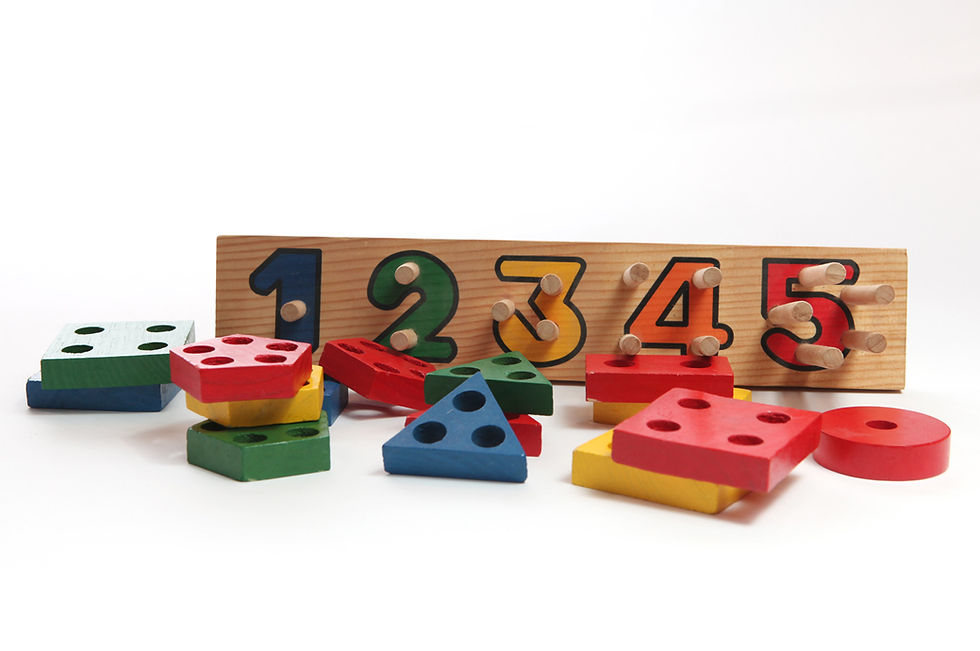How to develop number concepts in young students
- Charlene Morris
- Oct 6, 2011
- 3 min read

Your child is never too young to begin developing number concepts. There are many fun games that introduce the basics of counting, comparing sets, classifying, etc. Here are some concrete ideas for you to use when helping your child:
1. Whenever possible, practice counting with your child--the number of peanuts, candies, etc. being eaten for snack, the number of beads that there are on a necklace, the number of books there are on a shelf, and so on. This can be capped off by participating in your child’s activity--go ahead and enjoy the snack, too!
2. Provide your child with cotton balls and plastic cups. Get him/her to place a selected number of balls in each cup, drawing the number with a marker. Repeat this activity with different numbers, allowing your child to examine the relationship between the numbers and the quantity drawn.
3. Write a number on a piece of paper. Give your child dried beans. Ask him/her to place the number of beans, corresponding to the number you have written down, on the sheet of paper. Your child will really enjoy this activity when asked to glue the beans on to the sheet of paper and to decorate the sheet with sparkles or decorations!
4. Whenever feasible, get your child to organize his/her possessions in some logical way: e.g. divide books into topic areas (animal books, food books, books about friendship, etc.) As a by-product, you will get your child to clean up a messy room!
5. As a classification activity, have your child arrange objects by height, shape, or by some other dimension: e.g. organize crayons in terms of height, from the shortest to the tallest.
6. Classification activities can also be based on household routines: e.g. you can ask your child to organize in some specific way the substances or materials you are using as you prepare dinner (by color, by shape, by function, etc.). In this way, turn dinner preparation into a fun and interactive activity!
7. Stress the relation between number symbols and concrete objects whenever possible: e.g. counting buttons on a shirt, plates on a table, and so on.
8. Show your child that the same objects can also be classified according to pattern: e.g. the buttons according to colour, the plates according to size, and so on.
9. As another counting activity, ask your child to put the number of items, in a situation, in a one-to-one correspondence: e.g. the number of tea cups vs. the number of people at a tea party. You can then ask your child to determine if there are more or less teacups than required. Make sure you provide real tea and cookies so you can both enjoy the event!
10. You can also ask your child to determine if there is a one-to-one correspondence between the number of envelopes and birthday party invitations that you will be mailing out, asking your child to determine if there are more or fewer envelopes than invitations. Learning should always be a fun activity in your house. Don’t force concepts--allow your child to acquire them naturally through experience. Remember, by just showing interest in your child, you will provide many unique opportunities to grow and learn! Be creative! Have fun!
We are always here to help at Grade A Tutoring and Learning Centre. If you would like to reach out to us, please fell free to contact us via phone or WhatsApp at 324-5496 or via email at gradeatutoringcentre@gmail.com.



Comments